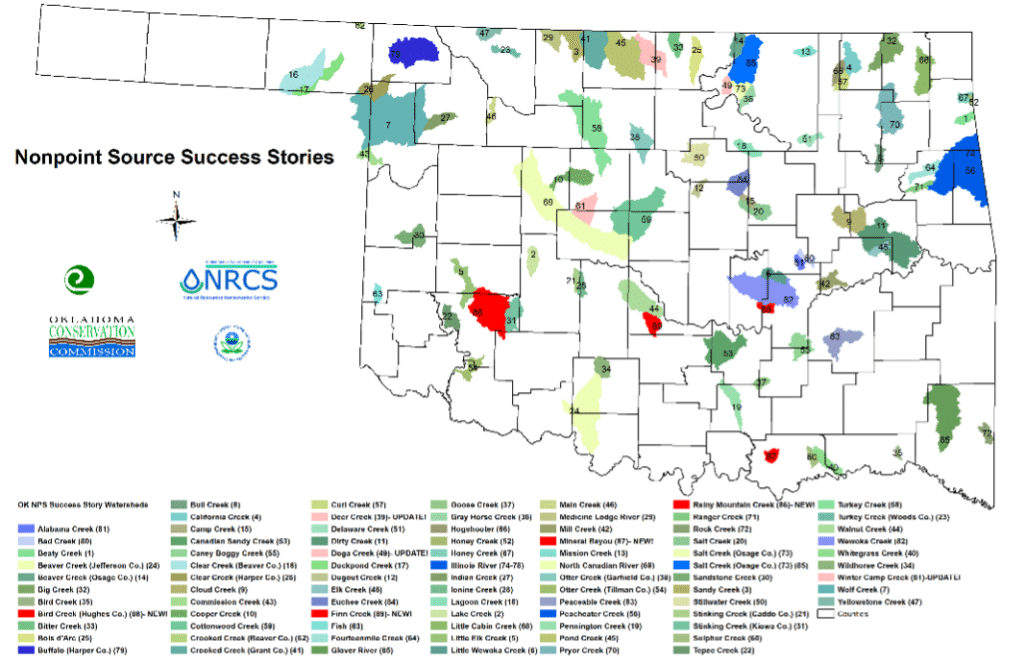We reduce nonpoint source pollution in the State of Oklahoma through planning, implementation, education, and monitoring.

Water quality restoration projects are considered successful when improvements in water quality can be measured during or after the project. Measures of success vary by project and can include a stream meeting one or more water quality standards and being removed from the state’s 303(d) List of Impaired Waters; a stream that has measurably less pollution, such as toxins, bacteria, or phosphorous; and/or, a stream that exhibits an increase in biological health, such as more diverse fish and insect populations. These are all considered measures of success.
It can take years to implement water quality projects, and more years to realize improvements in water quality, but it does happen. Post-project monitoring and data analysis have shown that water quality restoration projects can improve water quality.
Read about our nationally recognized Success Stories on the EPA website.